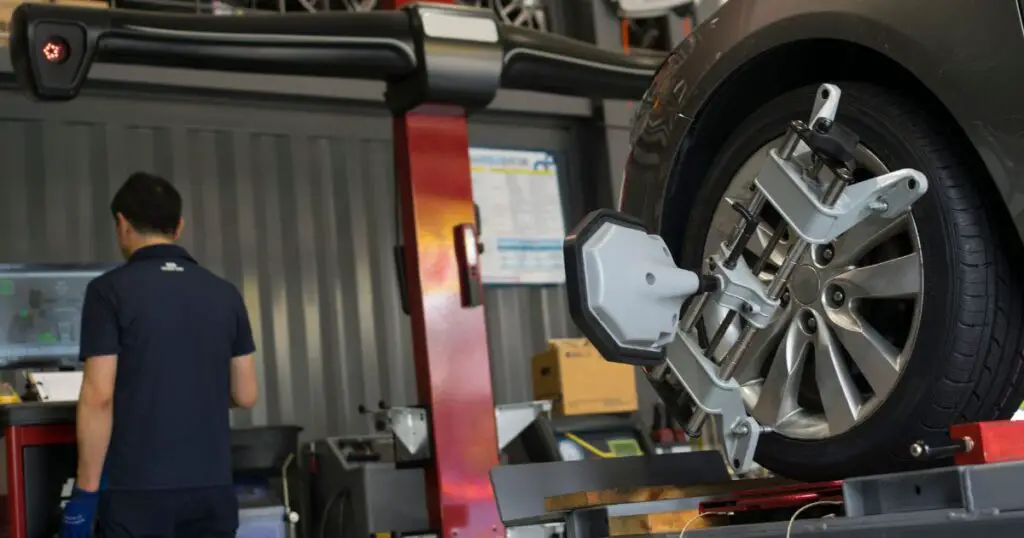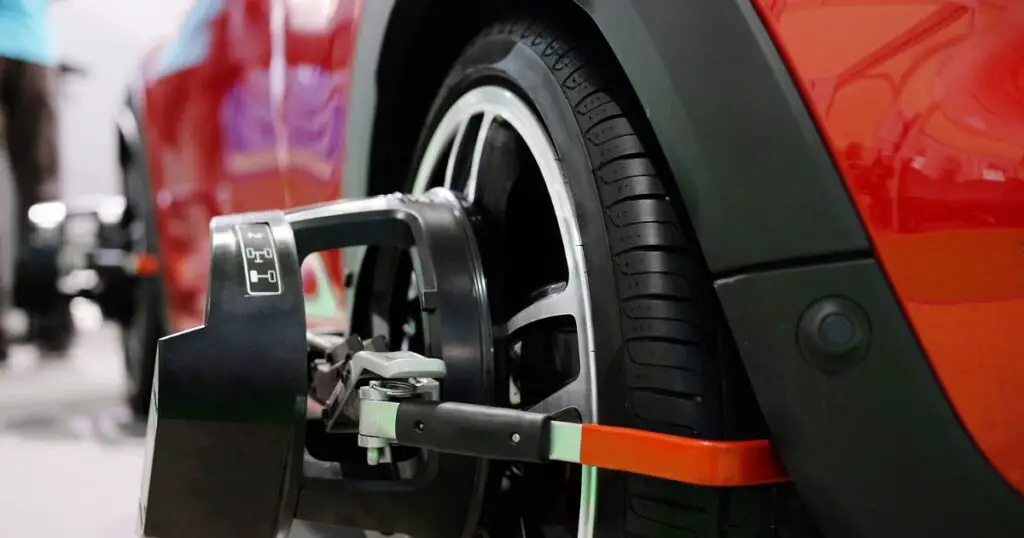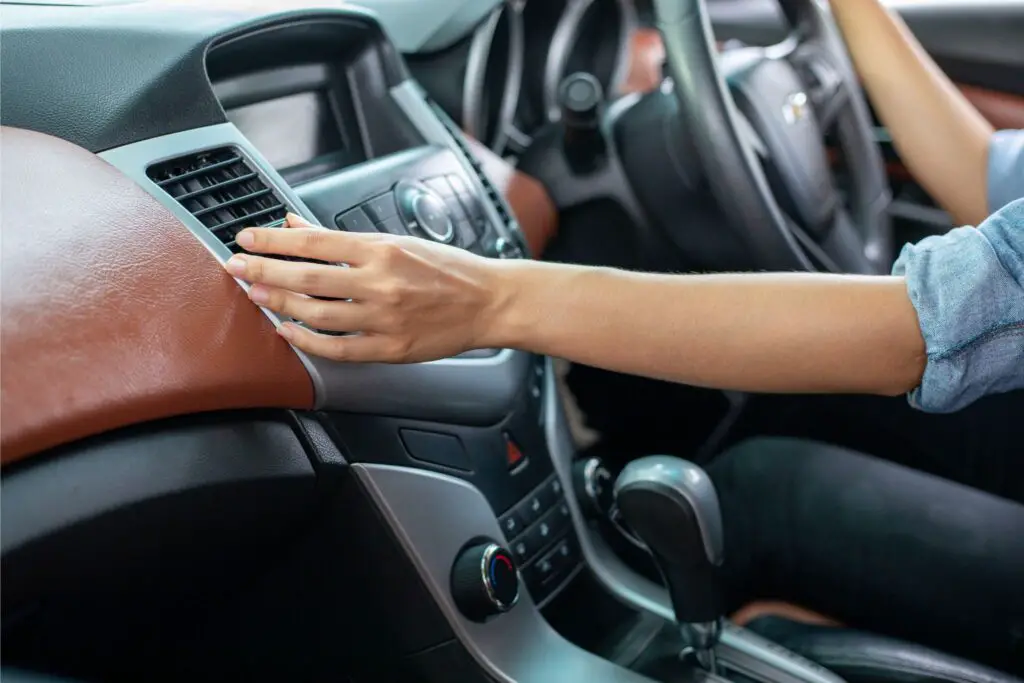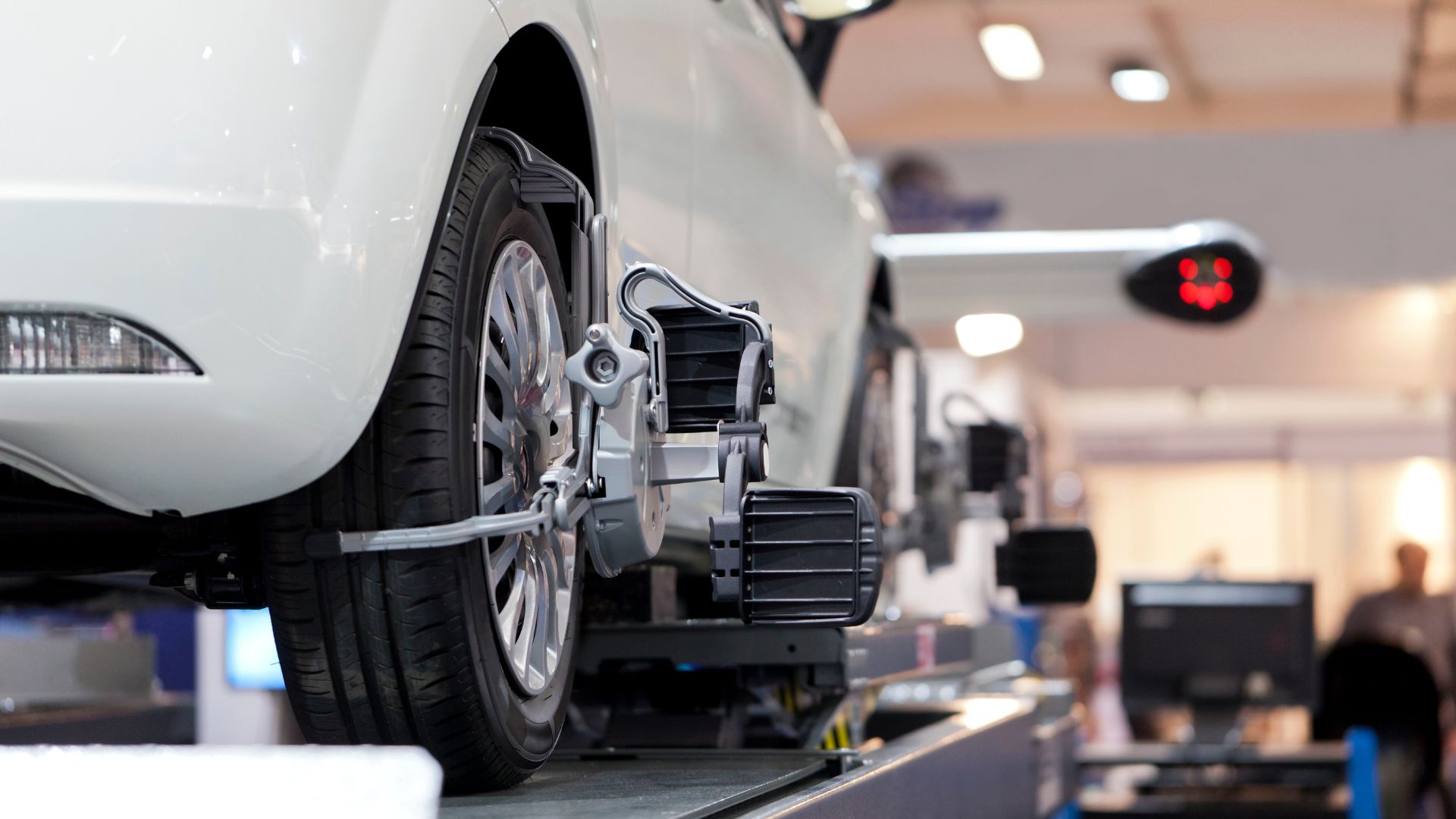Many Toyota owners are familiar with basic car maintenance, such as oil changes, tire rotation, and brake service. But when it comes to wheel alignment, it’s not accorded the same importance as the above three routine checks.
Wheel alignment is the process of ensuring all your tires and axles are pointing in the same direction. It entails measurement and adjustment of the caster, camber, and toe. Wheel alignment also extends to the adjustment of the steering wheel and suspension.
The primary purpose of a regular wheel alignment is to ensure the vehicle drives straight instead of drifting. Failure to perform routine wheel alignment often leads to quicker tire wear.
It can also damage your suspension and axles. Driving a Toyota with unaligned wheels is risky because it can lead to accidents. Therefore, this is a crucial part of your auto service that should be done regularly.
The guide below will provide a comprehensive review of Toyota wheel alignment. One thing you have to understand is that Toyota cars have a unique suspension design.
Therefore, the wheel alignment procedure is a bit different. So, let’s dive straight into everything you need to know about Toyota wheel alignment.
Symptoms of a Toyota needing a wheel alignment
Wheel alignment should be done every time you perform car routine maintenance, such as rotating the tires or changing the oil. But, sometimes, you may need to do it earlier.
There are a couple of symptoms your Toyota may show when it needs a wheel alignment. Here is how you can tell that it’s time to align your wheels;
Uneven Tire Wear:
Tires work together simultaneously, so they should wear evenly. If you notice that your wheels are wearing unevenly, there is a good chance that the alignment is distorted. You should make arrangements on how your wheels will be aligned immediately.
Crooked Steering Wheel When Driving Straight:
Your Toyota’s steering wheel is designed to be upright while driving on a straight road. If you have to hold it at a certain angle while driving on a straight road, then the wheels should be aligned.
Pulling to One Side While Driving:
This standard test checks whether the wheels are out of alignment. When your Toyota starts to pull to the left or right while driving, you need to schedule a wheel alignment.
Loose or Vague Steering Feel:
Toyota steering wheels are set to smoothly return to their natural position after negotiating a turn. Your wheels are not aligned if it feels loose or vague after a turn. If the misalignment of your wheels is severe, the steering wheel might vibrate or shake even when you are on a smooth road.
Squealing Noises:
Sometimes, when your wheels are misaligned, you may hear strange squealing noises.
Types of Toyota wheel alignments
There are two main types of wheel alignment that can be performed on your Toyota. They include;
i. Basic Alignment
This is the most common type of wheel alignment and entails adjustments of the following;
- Camber: It is the outward or inward angle of a tire when viewed from the front of the car. There is positive and negative camber. When your wheels are tilted too much on the inside or outside, that is a sign of misalignment. This needs to be adjusted. Worn ball joints and bearings can also cause camber misalignment.
- Toe: It refers to the angle of your wheels when viewed from above. Your wheels can either toe in or out. And both ought to be adjusted to achieve a neutral angle, preferably the one recommended by Toyota.
- Caster: It is the angle from which your suspension and steering axis meets the wheel. The caster can be viewed from the side of the wheel. Caster can also be positive or negative. The wrong caster setting doesn’t cause uneven tire wear but can affect vehicle stability and steering.
ii. Full Alignment
If you want to ensure that your wheels are correctly aligned, you can consider a full alignment. It entails the above three adjustments plus thrust angle adjustment.
Thrust angle entails adjusting the thrust line so that it can be positioned at a right angle from the center of the rear axle. The rear wheels are adjusted to be in the same line as the front ones.
If the thrust angle is misaligned, your Toyota rear wheels will not follow the direction of the front wheels. As a result, the car must be counter-steered to be driven along a straight line.
How to perform a Toyota wheel alignment


Did you know that it’s not a must for you to take your car to a mechanic for a wheel alignment? If you are a DIY enthusiast, you can easily do this at home. You can use the guide below for inspiration.
Step 1: Gather the Necessary Tools and Equipment
You probably don’t own an alignment machine unless you are a mechanic. So, you will have to improvise. To perform a wheel alignment at home, you will need a tape measure, a string, and a few rods that are longer than your car width and clamps.
A pro tip: If you prefer to perform car maintenance at home, it’s a good idea to invest in a wheel alignment machine.
Step 2: Place the Vehicle on a Level Surface and Secure It in Place
You then need to identify a stable and flat surface. This is important as it will determine the accuracy of your measurements. Also, a flat surface ensures that your wheel suspension is the same on all sides and axles.
You need an extra person to get inside and press on the brakes to secure the car. An extra set of hands comes in handy in measuring camber, toe, and caster.
Step 3: Check and Adjust the Tire Pressure
Adjusting tire pressure ensures your wheels are in line with OEM specifications. If your wheels have a lot or a little tire pressure, there is a good chance that the readings will be off.
Step 4: Measure and Adjust the Camber, Caster, and Toe
If you have an alignment machine, you would need to clamp it in and get readings from a computer. But if you don’t have one, you will need to measure the caster, camber, and toe manually.
To get these readings, place two rods in front of your car and one behind it. You can hold them together using a clamp. Run the strings from both sides of the rod, ensuring they are parallel to your car.
Repeat this step for the camber, caster, and toe while measuring and making adjustments. A quick google search can reveal the ideal specifications for your Toyota’s wheel alignment.
Step 5: Test Drive the Vehicle to Check the Alignment and Make Any Final Adjustments
Once you align your wheels, you can go for a quick drive and check if the symptoms mentioned above have disappeared. If not, you can perform more adjustments, and your Toyota should be appropriately aligned.
How often a Toyota should have a wheel alignment
In your car’s manual, you will find a specific recommendation from Toyota on how frequently your wheels should be aligned. However, if you can’t access your manual, you should know that Toyota generally proposes that wheels should be aligned after every 10,000 to 15,000 miles.
It’s also a good idea to perform a wheel alignment whenever you rotate your tires. This will ensure the longevity of your tires and the suspension.
If your car has been involved in a collision or you have made any changes to your suspension, you must also perform a wheel alignment.
Tips for maintaining proper Toyota wheel alignment


Once you have aligned your wheels, you must take stringent measures to retain that excellent alignment. Here are some tips on how you can maintain proper wheel alignment.
Avoid hitting potholes and curbs
We can’t emphasize enough the importance of watching where you are going. Potholes are the number one culprit for misaligning wheels. If you can avoid them, the longer your wheels will stay aligned.
Have the alignment checked regularly and adjust it as needed
You don’t have to wait 15,000 miles to check your wheel alignment. Form a habit of checking the alignment regularly.
Also, don’t ignore the symptoms we shared with you earlier. If your car starts drifting to the left, have it checked asap.
Rotate the tires according to the manufacturer’s recommendations
Make sure that you rotate your tires every 5,000 miles. The same applies to your tire pressure. Deviating from OEM specifications is a leading cause of wheel misalignment.
Use a high-quality alignment machine and follow the manufacturer’s instructions
As mentioned earlier, investing in a high-quality wheel alignment machine is a good idea. That’s the only way you can get accurate readings.
The effects of improper Toyota wheel alignment
Driving a Toyota with misaligned wheels can have various side effects, such as;
- Decreased fuel efficiency: When your wheels are not correctly aligned, they face more resistance against the road, resulting in poor fuel economy.
- Poor handling and stability: An improper wheel alignment causes your car to assume an unnatural driving position. This affects its stability and navigation.
- Increased tire wear and the need for frequent tire replacements: Even though the effects of improper wheel alignment can’t be felt immediately, they can be pretty expensive. Wheel misalignment speeds up tire wear forcing you to replace them regularly.
- The potential for accidents or loss of control of the vehicle: Since misaligned wheels affect stability, handling, and steering, you can quickly lose control of your car. Therefore, there is a higher risk of accidents.
DIY vs. professional Toyota wheel alignment
Regarding wheel alignment, there are two ways you can approach it. Either do it yourself or take it to a professional mechanic. Both options have pros and cons.
Let’s start with DIY Toyota wheel alignment.
Aligning the wheels of your Toyota has several perks. For instance, it’s affordable, and you can adjust your camber, caster, and toe.
On the downside, a DIY wheel alignment requires in-depth knowledge of tire angles and measurements. This is something most average car owners lack. Secondly, you need wheel alignment tools.
You must have the proper wheel alignment tools and equipment. That’s the only way you are guaranteed accurate readings.
On the other hand, professional wheel alignment is the go-to option for most Toyota owners. An expert mechanic uses advanced alignment machines to get the best readings.
Therefore, you are assured of an excellent wheel alignment. They also have the knowledge and skills. The only drawback of this method is that you will have to pay them.
The cost of Toyota wheel alignment
How much you will pay for Toyota wheel alignment will depend on several factors. For instance, if you want a complete alignment, the cost will be higher than the basic version.
The location of your mechanic shop can also affect prices. Tire shops located in cities and major towns tend to charge more.
To find the best price for Toyota wheel alignment, make sure that you shop around and compare quotes from various mechanics. Having some knowledge of wheel alignment can also give you a price negotiating advantage.
Additionally, maintaining excellent wheel alignment goes a long way in ensuring you lower servicing quotes and the number of tire replacements due to premature wear.
Toyota models with a history of alignment issues
Certain models from Toyota have a history of alignment problems. Examples include;
- Toyota Camry: Its issues stem from the front suspension and steering components causing alignment problems.
- Toyota Corolla: The front lower control arm bushings are highly vulnerable to damage, leading to alignment issues.
- Toyota RAV4: The front lower control arm is a common culprit behind alignment problems.
- Toyota Prius: A faulty steering shaft can trigger alignment complications.
- Toyota Tundra: Because it’s a truck, most people assume that the Tundra is indestructible. But potholes and speedbumps can easily lead to alignment problems.
Suspension and steering components that can affect Toyota wheel alignment
Potholes and bumps aren’t the only culprits that can cause wheel misalignment. Some parts of your steering and suspension can also lead to a similar outcome.
Ball Joints: When they wear out excessively, they create room for a lot of movement within the socket, leading to abnormal tire wear and misalignment.
Tie Rod Ends: If they become loose, tie rod ends cannot assist in steering. Therefore, you will notice the front axle leaning to one side.
Control Arm Bushings: Worn control arm bushings don’t just cause wheel misalignment. They also trigger vibrations on the steering wheel and uneven tire wear.
Stabilizer Bar Links: If faulty, it will cause misalignment of wheels, leading to loose steering and poor handling.
Wheel Bearings: Bad bearings can significantly affect alignment and cause the wheels to wobble.
The importance of proper wheel alignment for vehicle safety
Wheel alignment heavily influences vehicle performance and safety. A Toyota with misaligned wheels suffers from poor handling and stability.
Therefore, there is a higher risk of accidents. Any issue with your steering and suspension components must be dealt with immediately to avoid misalignment.
The benefits of regular wheel alignments beyond just tire wear
Increasing the lifespan of your tires isn’t the only reason you should align your wheels. There are other benefits that come from this auto service which include;
Improved fuel efficiency due to reduced rolling resistance. There being minimal resistance against the road ensures better gas mileage.
Enhanced handling and performance. If your wheels are correctly aligned, you will have better control of your car.
A smoother, more comfortable ride.
Longer lifespan for the suspension and steering components. Regular wheel alignment also increases the lifespan of your ball joints, wheel bearings, and tie rods.
The role of tire type and size in Toyota wheel alignment


As tempting as it may be to go a size higher or lower, you need to stick to Toyota’s wheel requirements. Bigger tires increase the camber and caster, often leading to misalignment. The same applies to exposing your wheels to a heavier load than they can carry.
It’s also worth mentioning that different types of tires can affect the handling and alignment of your wheels. For instance, softer wheels offer better handling but wear out faster. Also, when the size is bigger than the factory, the alignment needs to be adjusted to cater to the changes.
The problem with most aftermarket wheels is that they are not compatible with your Toyota. Therefore, there is a high risk of misalignment.
How to prepare a Toyota for a wheel alignment
Unlike an oil change, wheel alignment needs thorough preparation. Some of the things you need to do are;
• Clean the tires. This will improve access and visibility.
• Make sure the tires are properly inflated.
• Placing the vehicle on a level surface.
• Ensuring it’s appropriately secured during the alignment process.
• Confirm if other parts need to be repaired first.
Advanced Driver Assistance Systems (ADAS) Role in Toyota Wheel Alignment


Below are some of the key ADAS features found in most advanced cars nowadays – including some toyota brands. The table below covers some of these ADAS features and their description.
| ADAS Feature | Description |
|---|---|
| Adaptive Cruise Control | Maintains a set speed and safe distance |
| Lane Keep Assist | Helps keep the vehicle within its lane |
| Blind Spot Monitoring | Alerts the driver in the blind spot areas |
| Automatic Emergency Braking | Applies the brakes to avoid collision |
| Park Assist | Automatically park’s the vehicle |
| Rear-view Camera | View of the area behind the vehicle |
| Head-Up Display | Projects important info onto the windshield |
Wheel alignment doesn’t just affect the camber, caster, and toe of your tires. It also calibrates the ADAS system in your Toyota.
If your wheels are misaligned, components such as sensors, radars, and cameras which are all connected to ADAS, will not function properly.
That means features such as adaptive cruise control and lane departure warning will be miscalculated.
Once you are done with wheel alignment or suspension work, it’s imperative that the ADAS is recalibrated. This allows it to sync with the new measurements.
Conclusion – Toyota Wheel Alignment
That was a pretty lengthy guide. But by now, you should know all there is about aligning the wheels of your Toyota.
Wheel alignment is a very crucial part of Toyota care and maintenance. Besides increasing your tire’s lifespan, it promotes better steering, handling, ride comfort, performance, and fuel efficiency.
This post contains affiliate links. Read the full disclosure here.


I am passionate about all things automotive and have a deep understanding of the topic. As a mechanic, I use my free time to share knowledge of everyday challenges that any car owner can experience – helping you make informed decisions about tires.

